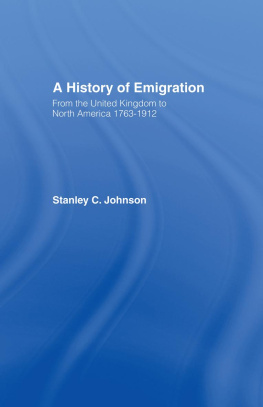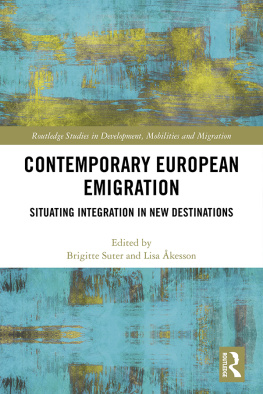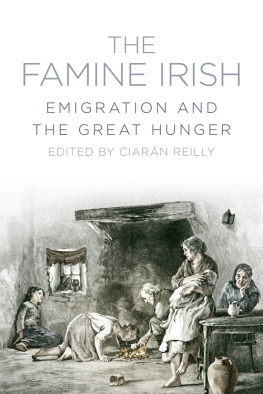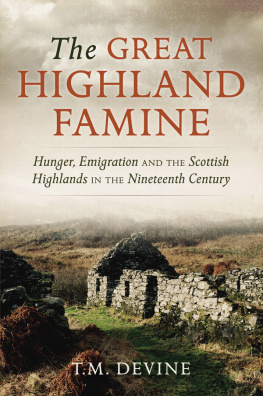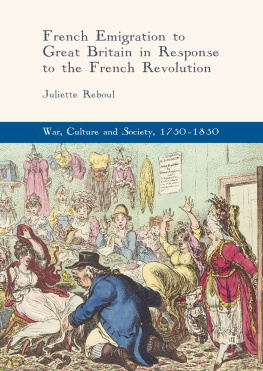CONTENTS
SUMMARY
CHAPTER I. PRELIMINARY SURVEY, 17631815
Effects of Treaty of Peace on emigration, p. 1. Volume of early emigration from United Kingdom, p. 2. Loyalist migration to Nova Scotia and Canada, p. 5. Glengarry emigrants, p. 6. Lord Selkirks emigrants, p. 8. Colonel Talbots emigrants, p. 11. Effects of Napoleonic wars on emigration, p. 12.
CHAPTER II. HISTORICAL SURVEY, 18151912
Outline of movement during period 18151912, p. 14. Sources of information respecting emigration, p. 16. The Select Committee of Emigration, 18267, p. 16. Parliamentary grants in aid of Emigration, p. 19. E. G. Wakefields theories, p. 20. Lord Durhams enquiry in 1838, p. 22. The Great Famine in Ireland, p. 25. The Colonial Land and Emigration Commissioners, p. 25. Canadian schemes, p. 27. The Emigrants Information Office, p. 29. Sir H. Rider Haggards proposals, p. 30. The work of emigration societies, p. 32. The Poor Law Commission, p. 34. Mr. Burns and the Imperial Conference of 1911, p. 35.
CHAPTER III. THE CAUSES OF EMIGRATION
Growth of population contrasted with growth of emigration, p. 38. Distress in Ireland, p. 40; Scotland, p. 40; England, p. 41. The consolidation movement, p. 42. The change from arable to pasture land, p. 44. Depopulation in Scotland, p. 45. The unsatisfactory lot of the farm-hand, p. 46. The recurring agricultural depressions, p. 47. The potato crop and Irish emigration, p. 52. The Industrial Revolution, p. 53. The case of the weavers, p. 54. The introduction of steam-power, p. 56. The growth of foreign industrial competition between 1836 and 1845, p. 57. The question of artisan emigration, p. 57. The Stockport operatives, p. 58. Distress in Paisley, p. 59. The ribbon weavers of Coventry, p. 59. The depression of 1886, p. 59. Recent emigration classified, p. 60. The work of inducing emigration, p. 61. Feudal changes: their effects on emigration, p. 64. Prepaid passages, p. 65. Atlantic rate wars, p. 65. Industrial conditions in the country of reception, p. 67.
CHAPTER IV. UNASSISTED AND ASSISTED EMIGRATION
Unassisted emigrants outnumber the assisted, p. 68. The proofs we have that this is so, p. 69. Assistance available in early times, p. 69. Prepaid passages, p. 70. The practice of transporting redemptioners, p. 71. Philanthropic assistance, p. 72. Aid provided by landlords to ejected tenants, p. 72. The movement set on foot by Baroness Burdett Coutts, p. 72. Mr. Tukes enterprise: followed by that of Lady Gordon Cathcart and Mr. Rankin, p. 73. The work of the Charity Organisation Society, p. 76. The East End Emigration Fund, p. 76. The Church Army, p. 76. The Self-Help Society, p. 77. The Salvation Army, p. 79. Other help provided by minor philanthropic agencies, p. 79. The effect of the Dominion Land Act on charitable assistance, p. 80. The work of trade unions, p. 80. Governmental assistance, p. 85. The emigration votes of 1819, 1821, and 1825, p. 80. The Poor Law Commission of 1832, p. 86. The Union Chargeability Act of 1865, p. 87. The Further Amending Act of 1849, p. 92. County Councils, p. 94. The Purchase of Land Act, 1891, p. 96. The Unemployed Workmen Act, 1905, p. 97. The Dominion expenditure, p. 99.
CHAPTER V. THE TRANSPORT OF EMIGRANTS
Absence of legislation controlling Atlantic passenger traffic, p. 101. Result of increase in outflow, p. 102. The first passenger Act passed in 1803, in the face of much opposition, p. 102. The Act often evaded, p. 103. Amended Acts passed in 1823 and 1825, p. 103. Outcry against the legislation resulted in its repeal, p. 104. The uncontrolled passages: the hardships they imposed on the emigrants, p. 104. A new Act enforced in 1828, p. 105. The aim of the British Passenger Acts compared with that of the United States Acts, p. 106. The appointment of the Colonial Land and Emigration Commissioners, p. 109. The Royal Commission of 1851, p. 114. The experiences of Mr. Vere Foster, p. 116. The troubles incidental to embarking and landing, p. 117. The emigrant staff of inspectors at Liverpool; much overworked, p. 118. Castle Garden at New York, p. 118. New York legislation in 1855, p. 118. The prevalency of shipwrecks: the responsibility of shipowners on these occasions, p. 119. The case of the Robert Isaacs, p. 120. The change from sail to steam, p. 120. The position of Atlantic passenger transport in 1860, p. 122. The Merchant Shipping Act of 1894 and 1906, p. 123. The Atlantic journey to-day, p. 126.
CHAPTER VI. IMMIGRATION RESTRICTIONS
Preliminary survey, p. 131. The first measure of restriction: passed by New York State, 1824, p. 132. Abuses which arose as a consequence of the measure, p. 133. The introduction of a Head-Tax in 1832, p. 134. How the tax was expended, p. 134. The drawbacks to this legislation, p. 134. Appointment of the first board of Immigration Commissioners of the State of New York, p. 135. Their early decrees, p. 136. Seasonal taxes introduced in Canada, 1848, p. 136. Constant changes in the restriction code of Canada, p. 137. Arrangements of Ontario for attracting population, p. 138. Decision of the Supreme Court of the United States affecting restriction, p. 138. The action of the steamship companies, p. 138. Final arrangements between the two bodies, p. 139. Current United States restrictions, p. 140. Regulations drawn up by the Commissioners of Immigration, p. 141. Contract labour, p. 144. Paupers not welcome, p. 146. Weaknesses of the immigration laws, p. 148. Effect of such weaknesses on the community, p. 148. Current restrictive measures of Canada, p. 150. Spirit in which the measures were and are enforced, p. 156. The future of the restrictive policy, p. 157.
CHAPTER VII. THE RECEPTION OF IMMIGRANTS
Early information is wanting, p. 158. The available sources, p. 158. Reasons for supposing that immigrants between 1783 and 1820 were comfortably settled,

